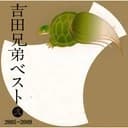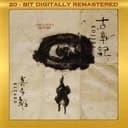Understanding the Iwato Scale Structure
The E Iwato scale consists of five notes: E, F, A, B♭, and D, following the interval pattern of root, minor second, perfect fourth, diminished fifth, and minor seventh. This unique construction creates intervals that are rarely found together in Western scales, particularly the half-step between the root and second degree combined with the tritone (diminished fifth). Unlike the E Major scale which builds consonant intervals, the Iwato scale deliberately employs dissonance to create its characteristic sound. The absence of a perfect fifth and major third removes the traditional harmonic anchors found in Western music, giving the scale its floating, unresolved quality. This intervallic makeup is what makes the Iwato scale one of the most recognizable and emotionally evocative scales in the Japanese musical tradition.
Historical and Cultural Significance
The Iwato scale has deep roots in traditional Japanese music, where it has been used for centuries in court music (gagaku), theatrical performances, and religious ceremonies. The name "Iwato" refers to the rock cave from Japanese mythology, evoking imagery of darkness and mystery that perfectly captures the scale's sonic character. Historically, this scale was played on traditional instruments like the koto, shakuhachi flute, and shamisen, where its dark intervals created the perfect backdrop for storytelling and spiritual expression. Unlike the brighter E Yo scale, which represents joy and celebration in Japanese music, the Iwato scale traditionally conveys solemnity, introspection, and connection to the spiritual realm. This cultural context has influenced how modern composers approach the scale, often using it to evoke Japanese aesthetics or create atmospheric, contemplative passages in contemporary music.
Musical Applications and Notable Compositions
The Iwato scale has found its way into diverse musical contexts, from traditional Japanese compositions to modern film scores and video game soundtracks. Contemporary composers like Joe Hisaishi have employed scales from the Japanese pentatonic family, including Iwato, in their film scores for Studio Ghibli movies to evoke traditional Japanese atmosphere and emotional depth. Jazz musicians exploring world music influences have incorporated the Iwato scale to add exotic color and tension to their improvisations, while ambient and electronic music producers use it to create meditative, otherworldly soundscapes. The scale works particularly well in modal harmony contexts where you can sustain its characteristic intervals without resolving to traditional Western cadences. For pianists, the Iwato scale offers a gateway into understanding how different cultures approach melody and harmony, providing fresh perspectives beyond the familiar E Natural Minor scale and other Western modes.
Practice Tips and Scale Relationships
When learning the E Iwato scale, focus first on internalizing its distinctive half-step motion between E and F, as this interval defines much of the scale's character. Practice the scale slowly, listening carefully to how each interval creates tension and resolution within the pentatonic framework. Try improvising simple melodies using only these five notes, allowing the scale's natural voice to emerge without forcing Western harmonic patterns onto it. The Iwato scale shares its pentatonic nature with other Japanese scales like the E Hirajoshi scale and E Kumoi scale, so practicing all three together can help you understand the broader family of Japanese pentatonic modes and how subtle interval changes create dramatically different moods. For those familiar with Western modes, note that while the Iwato scale shares some notes with E Phrygian, its pentatonic structure and unique interval choices create an entirely different musical language that rewards patient, culturally-informed exploration.




